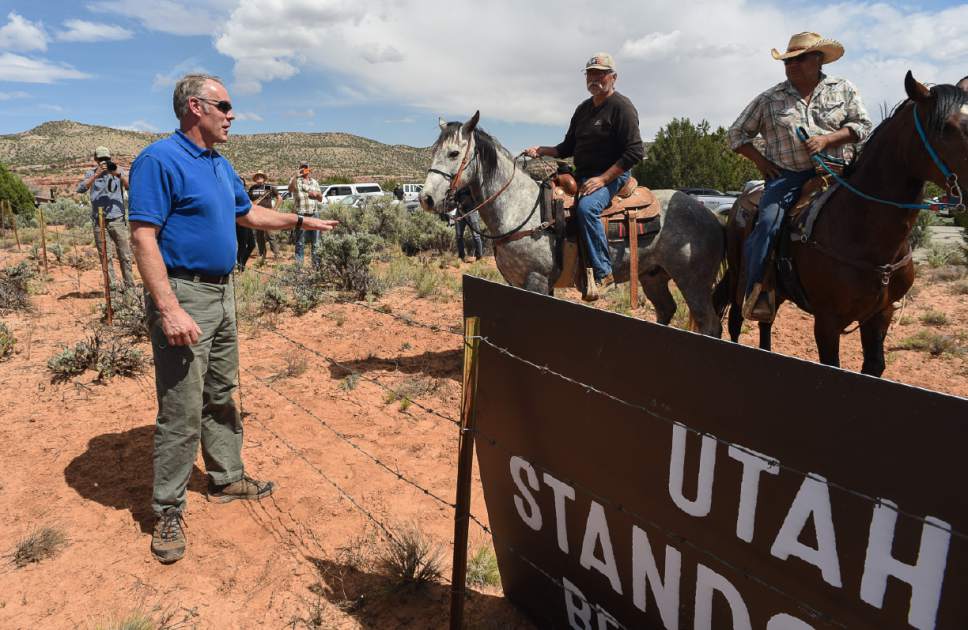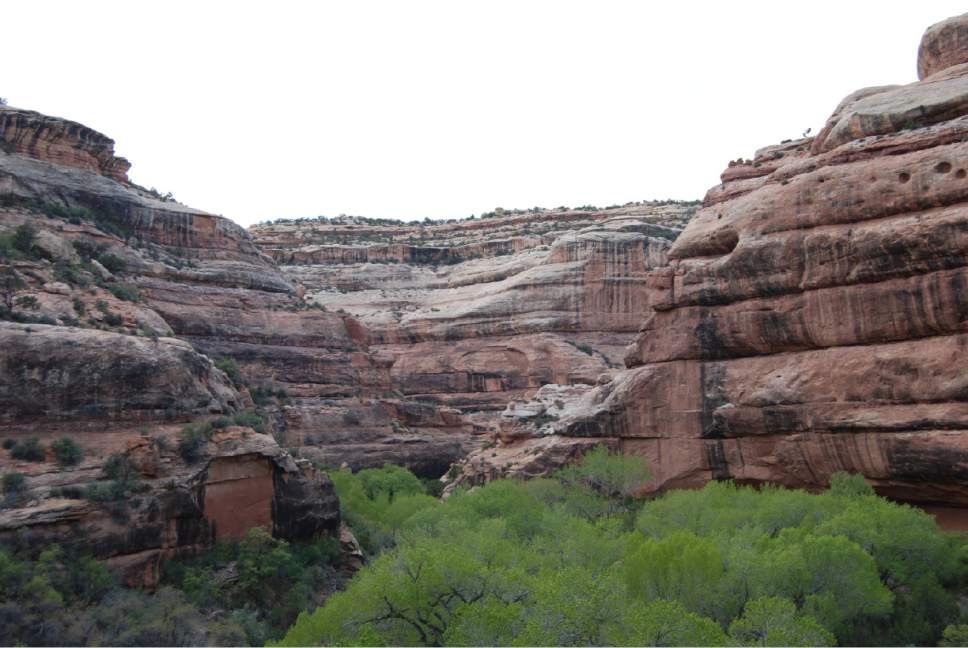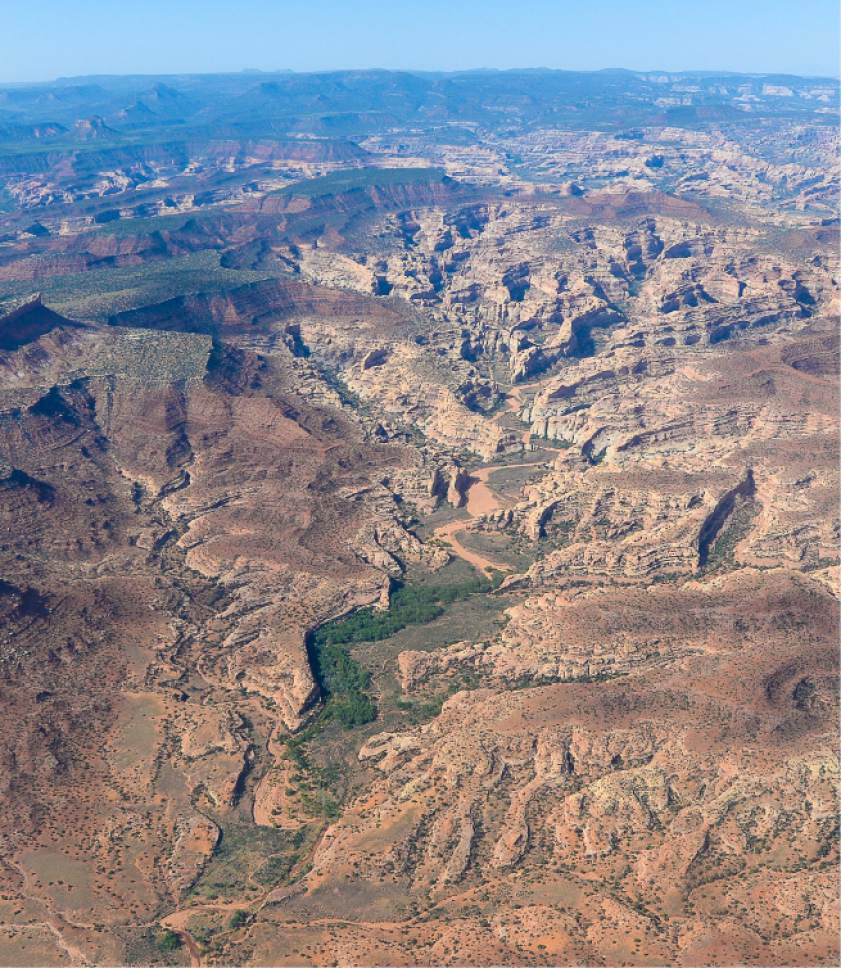This is an archived article that was published on sltrib.com in 2017, and information in the article may be outdated. It is provided only for personal research purposes and may not be reprinted.
The 15-day window for public comment on Utah's Bears Ears National Monument is closing fast, prompting calls on the Department of Interior to expand the comment period beyond May 26 and to add ways for interested residents to weigh in on the controversial designation and 26 other large monuments.
Interior officials are soliciting input on the matter online through the federal website http://www.regulations.gov, despite the lack of internet access among some American Indians affiliated with the tribes that either proposed or support the 1.3-million-acre monument, recently designated in San Juan County's Cedar Mesa and surrounding canyon country west of Blanding.
Monument advocates say they were largely excluded from engaging with Interior Secretary Ryan Zinke during his four-day swing through Utah last week on a "listening tour" organized by Gov. Gary Herbert's staff. Zinke assured the media that everyone can make their views known through the website, but New Mexico's Sen. Martin Heinrich contends language and digital barriers will prevent many American Indians from participating.
"Internet access is far from universal in Indian Country," the Democratic lawmaker wrote in a letter last week to Zinke, asking for public hearings and a 45-day comment extension. "Across vast reaches of the Navajo Nation, even cell service is hard to come by."
Following a four-day tour of San Juan County by his Interior chief Sally Jewell last July, President Barack Obama designated Bears Ears under the Antiquities Act. For the first time in the law's 111-year history, a president is now considering rescinding or shrinking monuments designated by his predecessors under the Act. Legal scholars argue the courts won't uphold a monument revocation not approved by Congress, while the Pacific Legal Foundation produced a study concluding the Act indeed gives presidents such authority.
As a political favor to Utah Sen. Orrin Hatch, President Donald Trump last month issued an executive order instructing Zinke to review all monuments designated since 1996 that exceed 100,000 acres, including Bears Ears and the 1.9 million-acre Grand Staircase-Escalante National Monument, designated by President Bill Clinton in 1996.
As of Monday, four days into the comment period, 19,567 submissions had been received through the federal website, more than 5,000 related to Bears Ears. The comments, which cover any number of monuments, can be read on the site although commenters' names and places of residence are not shown unless they are included in the body of the comment.
Zinke has until June 10 to recommend Bears Ears' fate, but 120 days to file reports on the other monuments, hence differing deadlines for public comment — May 26 for Bears Ears, July 10 for the other monuments.
Absent congressional action to either endorse or revoke the monument, Bears Ears will end up in court. The tribes will sue if Trump diminishes it. If left the way it is, the state will sue through a proxy, a group called Foundation for Integrated Resource Management, whose chairman Stan Summers accompanied Zinke to view the Bears Ears' Butler Wash ruins. The Bears Ears and Grand Staircase monuments are among the West's largest on Trump's review list and by far the most contested. State leaders denounce both as presidential abuses of the Antiquities Act, intended more to score political points than protect cultural and natural treasures. Conservationists believe they were forward-thinking moves that will support economic development and safeguard special landscapes for futures generations to enjoy.
While Zinke's trip drew praise from Utah's congressional delegation, Heinrich is concerned that the secretary's monument review is rigged to justify shrinking monuments.
Heinrich's constituents include many Navajo and Zuni, members of two tribes that proposed the monument, as well as 20 Pueblos whose residents are descendants of the American Indians whose 1,000-year-old habitations, artifacts and bones remain all over Cedar Mesa and its countless canyons.
"They must be provided with sufficient, culturally relevant opportunities to participant in the monument review process," wrote Heinrich, whose state has two monuments on the review list, the 243,000-acre Rio Grande del Norte and 496,000-acre Desert Mountains-Organ Peak, in the letter to Zinke. "I know you come to this office with a history of respecting and understanding tribal traditions and I hope you will work to ensure full engagement with tribal communities on the question of the monument's future before completing your review."
Heinrich's letter cited findings from the Federal Communications Commission that 80 percent of New Mexicans and 78 percent of Utahns residing in Indian Country lack access to fixed broadband. That claim led state Sen. David Hinkins to scoff.
"They've got a lot more than you think," said Hinkins, R-Orangeville, whose Senate district includes Bears Ears and Grand Staircase-Escalante national monuments.
"My constituents that lived in [the Navajo communities of] Monument Valley and Aneth, they all have access to Internet," he said. "They have community centers, and all have free Internet access there."
Brian Maffly covers public lands for The Salt Lake Tribune. Maffly can be reached at bmaffly@sltrib.com or 801-257-8713.
Twitter: @brianmaffly —
How to comment
Those who wish the Interior Department to hear their views on its national monument review should submit comments through http://www.regulations.gov. However, site visitors may have difficulties finding where to submit, especially on the Bears Ears monument, whose review is on a tighter time frame than the other 26 large monuments under review.
You must search by the review's identification number, DOI-2017-0002, or its Federal Register number, 2017-09490 — not by the names of the monuments in question.
Commenters can also submit through regular mail at Monument Review, MS-1530, U.S. Department of the Interior, 1849 C Street NW, Washington, DC 20240. Comments on Bears Ears must be received by May 26, or July 11 for the other monuments, including Utah's Grand Staircase.









